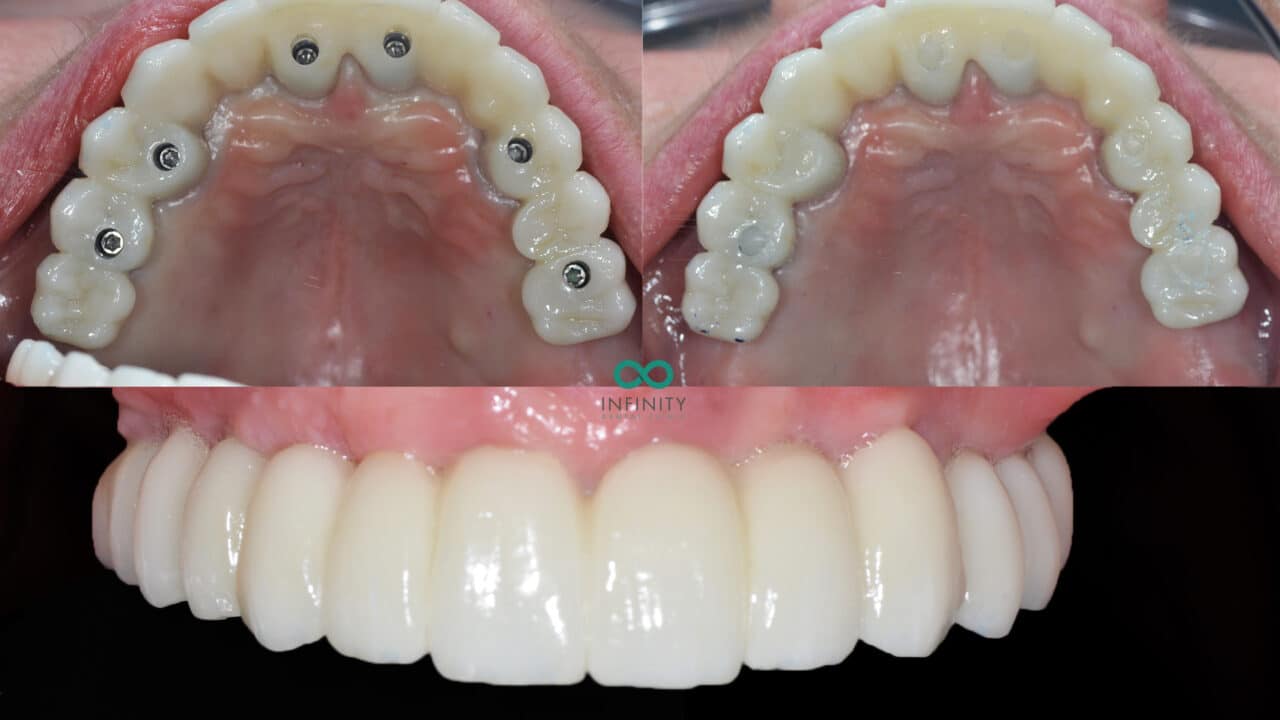7 Easy Facts About Dental Sense Explained
7 Easy Facts About Dental Sense Explained
Blog Article
The Best Guide To Dental Sense
Table of ContentsThe 30-Second Trick For Dental SenseSome Known Questions About Dental Sense.Getting The Dental Sense To WorkIndicators on Dental Sense You Should Know
are medical devices operatively implanted into the jaw to restore a person's capability to eat or their appearance. They give support for man-made (fake) teeth, such as crowns, bridges, or dentures. When a tooth is lost as a result of injury or disease, an individual can experience problems such as rapid bone loss, defective speech, or adjustments to eating patterns that lead to discomfort.Dental implant systems contain an oral implant body and dental implant joint and might additionally consist of an abutment fixation screw. Professional teeth whitening. The oral implant body is operatively put in the jawbone in location of the tooth's root. The dental implant joint is usually connected to the implant body by the joint fixation screw and prolongs through periodontals into the mouth to sustain the connected fabricated teeth
(https://www.tripadvisor.in/Profile/dentalsense1)Structure of The Dental Implant System selecting dental implants, talk to your oral provider regarding the potential benefits and risks, and whether you are a candidate for the treatment. Things to consider: Your general health is an essential consider establishing whether you are an excellent candidate for dental implants, for how long it will certainly take to recover, and how much time the dental implant might remain in place.
Smoking cigarettes might affect the recovery procedure and lower the long-lasting success of the dental implant. The healing procedure for the implant body might take numerous months or longer, throughout which time you generally have a short-lived abutment in location of the tooth. the dental implant treatment: Thoroughly adhere to the oral hygiene instructions offered to you by your dental copyright.
The 4-Minute Rule for Dental Sense
Implant failing can result in the demand for an additional surgery to repair or replace the implant system. Restores the capability to eat Restores cosmetic appearance Helps keep the jawbone from reducing due to bone loss Maintains the health of the bordering bone and gum tissues Assists keep nearby (nearby) teeth stable Improves quality of life Damage to bordering natural teeth during implant positioning Injury to the surrounding tissues throughout surgery, such as sinus opening Injury throughout surgical treatment (for example, fracture of bordering jawbone) Inadequate feature, such as really feeling like the teeth do not attack with each other generally An experience that the tooth is loosened or twisting in position resulting from an abutment screw loosening up Implant body failing (looseness of the dental implant body) due to systemic infection, which may be more probable in people with unchecked diabetes mellitus due to neighborhood infection in bone and gums sustaining the implant body due to postponed recovery, which might be most likely in people that smoke Trouble cleaning up the gum tissues around the implant, resulting in bad dental hygiene Neglected periodontal illness Post-surgical numbness due to nerve impingement or damage Constantly inform wellness treatment providers and imaging professionals that you have oral implants prior to any magnetic resonance imaging (MRI) or x-ray procedures.
FDA is not familiar with any type of adverse occasions reported for MRI or x-ray treatments with oral implants. Dental implants systems are normally made of products that adhere to international consensus criteria of the International Company for Standardization (ISO) or ASTM International. These criteria have information of what makes a secure product.

A dental implant is a structure that replaces a missing tooth. With screw-like tools, the surgeon inserts an implant right into the jawbone, and it acts as a support for a synthetic tooth, called a crown. A gadget called an abutment connects the artificial tooth to the oral implant. The crown is custom-made to fit the person's mouth and match the color of their teeth.
More About Dental Sense
Some individuals are not eligible for dental implant surgery. It is for dental doctors to operate individuals with: intense illnessuncontrollable metabolic diseasebone or soft tissue condition or infectionIf these problems are fixed, an individual can have the surgical procedure. In, oral cosmetic surgeons avoid operating on individuals with: If people with any of the above undergo oral implant surgery, there is a greater threat of the dental implant falling short.

Dental implant surgery is an individualized procedure. Offer you time to recover. Affix the post and final crown, bridge or denture.
Next, your cosmetic surgeon will very carefully put the dental implant into your jaw. Your surgeon will certainly rearrange your periodontals and close the cut with stitches. If your implant is near the front of your mouth, your dental practitioner will certainly make a temporary tooth for you to put on till you heal. That method, you won't have a space in your smile while you recuperate.
All About Dental Sense
Your supplier can inform you what to anticipate in your situation. During the recovery stage, your jawbone needs to fuse to the oral implant. This process, called osseointegration, is vital for stability and long-term success. This process can take anywhere from three to nine months. In many cases, it might take longer.
As soon as top article your implant heals, your dentist can connect the joint (tiny connector blog post) and your last repair (crown, bridge or denture). This typically takes regarding one hour to finish and may need a second small surgical treatment. You should not feel any kind of pain during your dental implant treatment because your service provider will make use of medicine to numb your periodontals.
Report this page